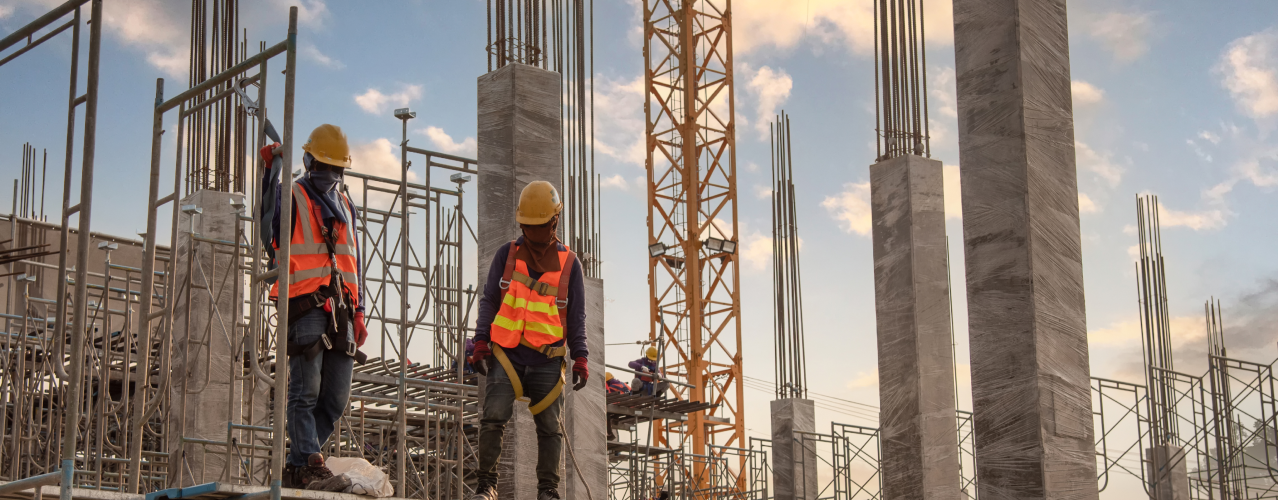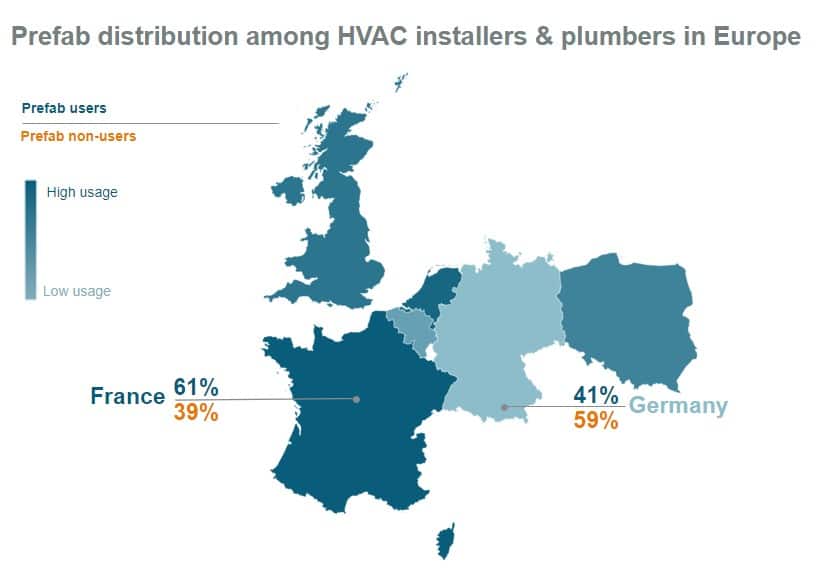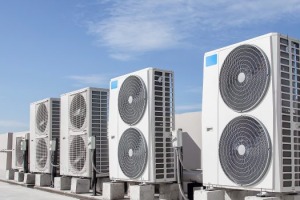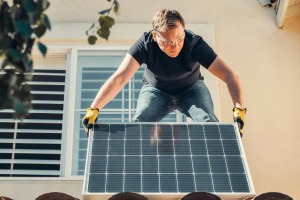


News I published 26 October 2022
Installers’ usage of prefab is continuously growing
Labour shortage is an ever-pressing issue in the construction and installation sector. Using prefabricated elements offers a partial solution to the labour shortage problem. Prefab allows construction and installation professionals to work faster and more efficiently. As such, prefab does not create more professionals to do the jobs, but allows the existing professionals to do more jobs in the same amount of time.
We have seen usage of prefab in European building construction increase year by year over the past decade. This is evident in for instance the growing experience Architects and contractors have with prefabrication in their projects. The question is whether that is also the case with professionals that are involved later in the construction process and further along the value chain, like for instance HVAC installers and plumbers?

More than half of European installers use prefabricated products in their projects
To answer this question, we focused the Q2 2022 report of USP Marketing Consultancy’s European Mechanical Installation Monitor on prefabrication. We asked over 650 HVAC installers and plumbers from six European countries about their experience with prefabrication in their daily business. As it turns out, more than 50% of these installers use prefabricated products in their installation projects. Looking at specific countries, this ranges from 41% of installers in Germany, to 61% of French installers using prefabricated products.
It has to be said though that prefab and prefabricated products are very broad terms describing a wide array of larger or smaller forms of prefabrication. We are talking about prefabricated products in the broadest sense, including anything from entire preconstructed and pre-installed boiler rooms or bathroom pods, to a few simple pipes that were cut to size before they were transported to the installation site.
Size matters
As mentioned, usage of prefab differs a bit per country. When comparing differently sized companies, however, more dramatic differences appear. Of the smallest installation companies (up to 4fte), only 37% reported to use prefabricated products in their projects, whereas 56% of the medium-sized companies (5-14fte) reported the same. Of the companies that employ 15 or more fulltime employees, nearly seven out of ten use prefab.
It is clear that the larger the company is, the more likely it is that it uses prefabrication in its projects. This is no surprise, as smaller installation companies are more often involved in smaller residential projects or do more maintenance and repairs, which less often involve prefab. Larger installation companies, on the other hand, are more often involved in large construction projects in which prefabrication is used more often.
Prefab usage likely to grow even more
As labour shortage is not expected to be resolved any time soon, that driver will cause prefab usage to continue to grow. Other benefits of prefabrication, like a more efficient use of materials and a reduction of waste and space needed at the construction site, will continue to drive its usage as well. Altogether the future of prefabricated elements and products is looking bright.
Still, prefab will be used the most by larger installation companies, as it is more profitable for them to use prefabricated elements in their generally larger projects. At the moment they are mainly using prefab in residential projects, and it appears there is still much to gain where it comes to non-residential application of prefabricated installation products.
For a full overview of installers’ usage of prefabricated products in their installation projects in six major European markets, we refer you to the Q2 2022 report of USP Marketing Consultancy’s European Mechanical Installation Monitor.

Read more about the subject


18 July 2024 I Dirk Hoogenboom
Willingness to invest of European consumers in sustainability improvements of their houses lower in 2024 than in 2023


02 July 2024 I Dirk Hoogenboom
BIM adoption among European HVAC installers remains low


06 June 2024 I Maja Markovic
Sustainability in the electrical installation sector; slow but steady growth


06 June 2024 I Dirk Hoogenboom
Trends in construction material usage

Fresh Insights Await
Our latest reports
Delve into the newest findings across various market segments, crafted for a cutting-edge overview. Explore our latest reports, brimming with up-to-date data, trend analyses, and in-depth examinations, all tailored to provide you with a comprehensive understanding of the current market dynamics.
Construction
Home Improvement
Installation
Construction
Trends in material usage Q1 2024
2024 102 pages
Explore the evolving trends in material usage among European architects in Q1 2024. Delve into the factors driving material preferences and the impact on construction aesthetics and sustainability.
1,850 Euro
Construction
Media orientation H2 2021
2024 161 pages
Explore the media engagement patterns of contractors to optimize your marketing strategies. Dive into a pool of insights that unveils how contractors interact with different media channels.
6,300 Euro
Construction
European Green Deal Q4 2021
2024 88 pages
Explore the impact and reception of the European Green Deal among architects. Understand how the initiative is influencing architectural practices and sustainability measures.
1,850 Euro
Construction
BIM Q4 2023
2024 246 pages
Key insights regarding the BIM usage and behaviour of European architects, and our latest future building volumes prognoses
1,850 Euro
Construction
Purchase Channels H2 2023
2024 123
Explore the buying and ordering behaviour among contractors in H1 2023. Uncover the key channels used, share-of-wallet and much more.
6,300 Euro
Construction
Behavioural segmentation and media usage report 2023
2023 75 pages
This report provides a comprehensive overview of purchase behaviour, products, and media usage, specifically focusing on European handymen. It delves into how handymen use media, and for what purposes, and examines their habits and preferences in terms of purchasing behaviour.
8,400 Euro
Home Improvement
DIY versus DIFM Q4 2021
2024 113 pages
This report is a must-have if you’re in the home improvement industry. It provides a wealth of information on the behaviour of DIY and DIFM consumers, their motivations, and the factors that influence their purchasing decisions.
3,150 Euro
Home Improvement
DIY or DIFM Q4 2023
2024 70
Explore the prevailing trends between DIY and DIFM in Q4 2023. Understand consumer preferences and the factors influencing their choice between DIY and DIFM.
3,150 Euro
Home Improvement
Branding Q3 2023
2023 93 pages
This report offers an extensive overview of the home improvement industry, with a focus on branding and the most popular brands within different categories. Within this report, you will gain insights into how customers perceive home improvement brands and what motivates them to buy certain products.
3,150 Euro
Home Improvement
Purchase channels Q2 2023
2023 114 pages
The European Home Improvement Monitor offers valuable insights on purchase channels in the European home improvement industry, examining the evolving preferences and behaviors of consumers across traditional retail and emerging online platforms.
3,150 Euros
Home Improvement
Purchase Channels Q2 2022
2022 124 pages
Uncover the prevalent purchase channels in the home improvement sector during Q2 2022. Delve into consumer preferences and the factors influencing their purchasing decisions.
3,150 Euro
Home Improvement
Do-it-yourself or do-it-for-me Q4 2022
2022 93 pages
Explore the prevailing trends between DIY and DIFM in Q4 2022. Understand consumer preferences and the factors influencing their choice between DIY and DIFM.
3,150 Euro
Installation
Smart & Connected Products Q2 2024
2024 120 pages
This report provides a comprehensive view of the attitudes of installers toward smart building solutions, specifically among electrical installers and their clients. In the report, you will find insights into the installers' experiences with installing smart products and the willingness of end users to invest in such solutions, as well as their motivations and pain points.
3,150 Euro
Installation
Sustainability Q1 2024
2024 81 pages
Delve into sustainability trends in the home improvement sector in Q1 2024. Discover consumer preferences and the shift towards eco-friendly home improvement solutions.
3,150 Euro
Installation
BIM Q1 2024
2024 84 pages
The European Mechanical Installation Monitor report provides a detailed analysis of the plumbing and HVAC industry. This report specifically focuses on BIM adaptation in the industry.
2,650 Euro
Installation
Sustainability Q1 2024
2024 99 pages
The European Electrical Installation Monitor report provides a detailed analysis of the sustainable solutions in the installation industry. This report specifically focuses on sustainability aspects in the industry.
3,150 Euro
Installation
Challenges toward sustainable future Q4 2021
2024 111 pages
2,650 Euro
Installation
Purchase channels Q4 2021
2024 106 pages
Delve into the training needs within the electrical installation sector. Understand the areas requiring skill development to meet the evolving demands of the industry.
3,150 Euro








